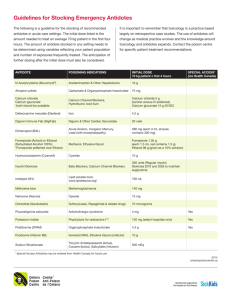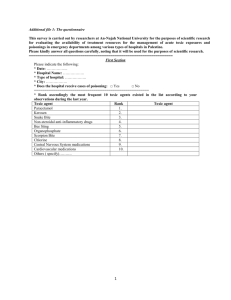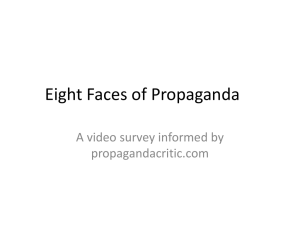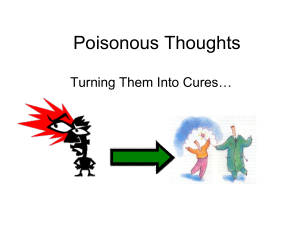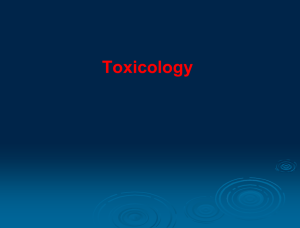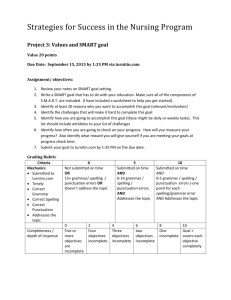Access in new Zealand to antidotes for accidental and intentional
advertisement
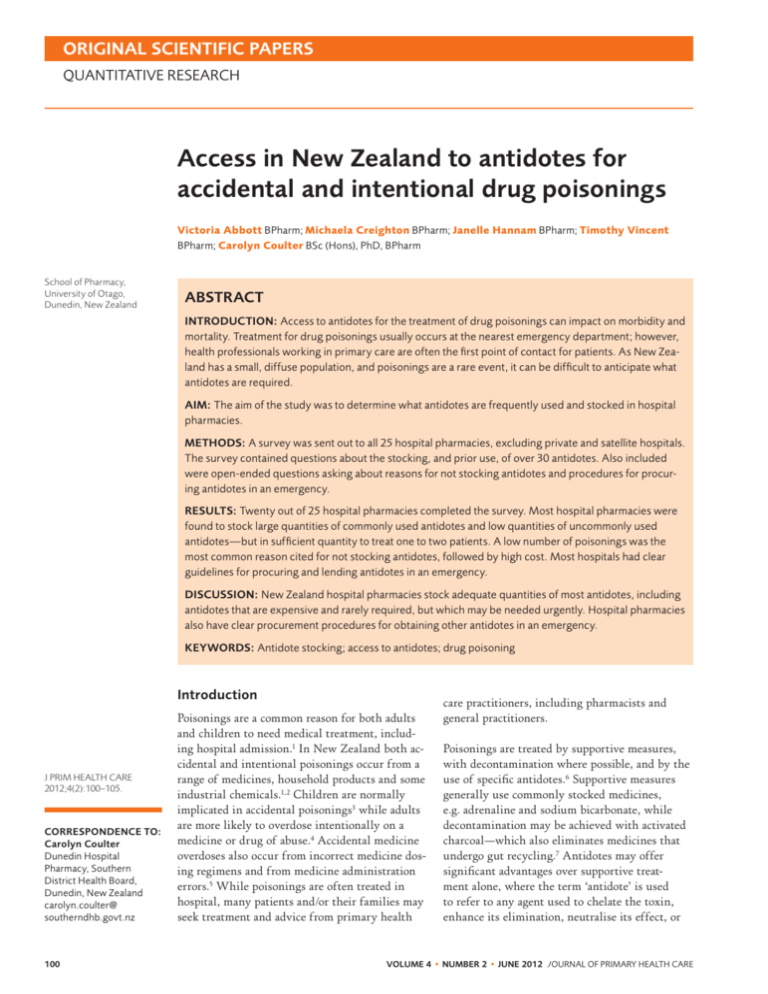
ORIGINAL SCIENTIFIC PAPERS quantitative research Access in New Zealand to antidotes for accidental and intentional drug poisonings Victoria Abbott BPharm; Michaela Creighton BPharm; Janelle Hannam BPharm; Timothy Vincent BPharm; Carolyn Coulter BSc (Hons), PhD, BPharm School of Pharmacy, University of Otago, Dunedin, New Zealand ABSTRACT Introduction: Access to antidotes for the treatment of drug poisonings can impact on morbidity and mortality. Treatment for drug poisonings usually occurs at the nearest emergency department; however, health professionals working in primary care are often the first point of contact for patients. As New Zealand has a small, diffuse population, and poisonings are a rare event, it can be difficult to anticipate what antidotes are required. Aim: The aim of the study was to determine what antidotes are frequently used and stocked in hospital pharmacies. Methods: A survey was sent out to all 25 hospital pharmacies, excluding private and satellite hospitals. The survey contained questions about the stocking, and prior use, of over 30 antidotes. Also included were open-ended questions asking about reasons for not stocking antidotes and procedures for procuring antidotes in an emergency. Results: Twenty out of 25 hospital pharmacies completed the survey. Most hospital pharmacies were found to stock large quantities of commonly used antidotes and low quantities of uncommonly used antidotes—but in sufficient quantity to treat one to two patients. A low number of poisonings was the most common reason cited for not stocking antidotes, followed by high cost. Most hospitals had clear guidelines for procuring and lending antidotes in an emergency. Discussion: New Zealand hospital pharmacies stock adequate quantities of most antidotes, including antidotes that are expensive and rarely required, but which may be needed urgently. Hospital pharmacies also have clear procurement procedures for obtaining other antidotes in an emergency. Keywords: Antidote stocking; access to antidotes; drug poisoning Introduction J PRIM HEALTH CARE 2012;4(2):100–105. Correspondence to: Carolyn Coulter Dunedin Hospital Pharmacy, Southern District Health Board, Dunedin, New Zealand carolyn.coulter@ southerndhb.govt.nz 100 Poisonings are a common reason for both adults and children to need medical treatment, including hospital admission.1 In New Zealand both accidental and intentional poisonings occur from a range of medicines, household products and some industrial chemicals.1,2 Children are normally implicated in accidental poisonings3 while adults are more likely to overdose intentionally on a medicine or drug of abuse.4 Accidental medicine overdoses also occur from incorrect medicine dosing regimens and from medicine administration errors.5 While poisonings are often treated in hospital, many patients and/or their families may seek treatment and advice from primary health care practitioners, including pharmacists and general practitioners. Poisonings are treated by supportive measures, with decontamination where possible, and by the use of specific antidotes.6 Supportive measures generally use commonly stocked medicines, e.g. adrenaline and sodium bicarbonate, while decontamination may be achieved with activated charcoal—which also eliminates medicines that undergo gut recycling.7 Antidotes may offer significant advantages over supportive treatment alone, where the term ‘antidote’ is used to refer to any agent used to chelate the toxin, enhance its elimination, neutralise its effect, or VOLUME 4 • NUMBER 2 • JUNE 2012 J OURNAL OF PRIMARY HEALTH CARE ORIGINAL SCIENTIFIC PAPErS quantitative research ameliorate future complications, rather than just a pure pharmacological antagonist.6 Specific antidotes include N-acetyl cysteine used to prevent paracetamol-induced hepatocellular damage8 and pralidoxime which is used in organophosphate poisonings.9 As poisonings are rare, it is difficult to anticipate what antidotes will be required, though these antidotes may be required urgently and may also be relatively expensive.10 The few published lists of antidotes are specific to North America and highly populated areas.11 However, it has been shown overseas that levels of antidote stocking and access to antidotes can impact on the quality of treatment a patient may receive after a poisoning.12–16 These studies also show the biggest barriers to antidote stocking are high cost and a lack of awareness of the need for adequate stocking.10,12,14 As New Zealand has a diffuse population it is difficult to predict what antidotes will be required and in what quantities. Also, currently there is virtually no published information on antidote stocking in New Zealand. This information about these secondary services is of benefit to many primary health care professionals when treating patients post–drug overdoses. The aim of this study was to determine what antidotes are stocked and used in New Zealand hospital pharmacies, possible barriers to stocking antidotes and procedures for procuring antidotes in an emergency. Methods A background literature search was performed to obtain articles addressing the issue of antidote stocking. This was performed in Medline and Embase using combinations of the following search terms: ‘antidote’, ‘hospital’, ‘stocking’, ‘adequate’ and ‘patient outcomes’, as well as medical subject headings (MeSH) where appropriate. From this a list of 32 important antidotes was devised (see Table 1) which included agents that are essential as well as some antidotes that are also beneficial but may be substituted by other agents or supportive care. All New Zealand hospital pharmacies (25) were sent the survey to complete. These hospitals ranged from large urban hospitals to small rural What gap this fills What we already know: It is known internationally that antidote stocking affects the access to antidotes, which in turn impacts on patient outcomes post-overdose. New Zealand has a small, diffuse population with medical services spread throughout the country. What this study adds: Antidote stocking and access in New Zealand is sufficient and is unlikely to negatively impact on treatment post-overdose. hospitals. Satellite hospitals serviced by the same hospital pharmacy and private hospitals were excluded. The survey contained questions about the use of 32 specific antidotes and approximately how many patients could be treated with each antidote. Other questions included reasons for not stocking antidotes and procedures for procuring antidotes in an emergency. The survey was mailed to hospital pharmacies in July 2009 and follow-up phone calls were made in August. The survey was de-identified on return to preserve confidentiality and then the results were analysed. The survey was piloted by two hospital pharmacists and had Category B Departmental Ethics Approval from the University of Otago. The results were analysed semi-quantitatively. Findings Twenty out of 25 hospital pharmacies completed the survey, a response rate of 80%. A range of hospitals completed the survey, four (20%) hospitals with <100 beds, six (30%) with 100–199 beds, five (25%) with 200–399 beds and five (25%) with 400+ beds. Table 1 shows the number of hospitals stocking each antidote while Figure 1 shows the use of the antidotes over the last two years. Quantities of each antidote were estimated as sufficient to treat 1–2, 3–5 or 6+ patients. Antidotes that were stocked in sufficient quantities to treat 6+ patients by the majority of hospitals stocking the agent were activated charcoal, benztropine, calcium chloride, calcium gluconate, cyproheptadine, folic acid, flumazenil, glucagon, N-acetyl cysteine, naloxone, neostigmine, nicotinamide, phenobarbital, phytomena- VOLUME 4 • NUMBER 2 • JUNE 2012 J OURNAL OF PRIMARY HEALTH CARE 101 ORIGINAL SCIENTIFIC PAPERS quantitative research dione, and sodium bicarbonate. Those stocked in quantities to treat only 1–2 patients by the majority of hospitals stocking the agent were cyanide antidotes, desferrioxamine, diazoxide, Digibind, ethanol, Fuller’s earth, nitroprusside, pralidoxime and redback spider antivenom. Folinic acid, Intralipid, magnesium sulfate, methylene blue and protamine were stocked in widely varying quantities. reasons given included having similar agents that did the same job, a lack of clinical requests, and unavailability of the antidote in New Zealand. Procedures for procuring antidotes in an emergency were from the supplier or from another larger hospital using taxi, courier, police or helicopter transport. Common reasons for not stocking various antidotes were the extreme rarity of needing the agent (18 responses), it being readily accessible from the supplier or another hospital (13), very high cost (12) and short shelf-life (11). Other This survey looked at the stocking of specific anti­dotes in New Zealand hospital pharmacies. Due to the rare occurrence of poisonings, antidotes can often seem to be excessively expensive; however, they do have a unique place in patient care as they usually give a distinct advantage over just supportive measures. Due to the low frequencies of poisonings, expensive antidotes, or antidotes with a short expiry, can seem to perform poorly in cost–benefit analyses; however, to choose not to stock them would be unethical. As the response rate to this survey was 80%, the majority of hospital pharmacies were included— these ranged from small rural hospitals to large urban hospitals. While no hospital stocked all of the antidotes included in the survey, most stocked a wide variety of antidotes in seemingly adequate quantities. It should be noted that as individual pack sizes of many antidotes vary, the survey did not request number of ampoules/ tablets/packs stocked, but rather the approximate number of adult patients that could be treated. Figure 1. Number of hospitals using specific antidotes in the last two years Discussion As expected, it was found that antidotes that are frequently used and relatively cheap were stocked by most hospital pharmacies in large quantities, e.g. N-acetyl cysteine, as were those agents used in the normal hospital setting such as naloxone. Some antidotes were not stocked because other cheaper agents exist, for example oral ethanol can be used instead of fomepizole (which is very expensive and hard to obtain) for methanol ingestion. Other antidotes were rarely stocked but are almost never required, such as Prussian blue for the treatment of toxic ingestions of caesium and thallium. Cyproheptadine was not frequently stocked; this may be because, while it can be used for serotonin syndrome (which may be on the rise due to a greater number of serotonergictype medicines), supportive measures are what decrease morbidity and mortality. Also, currently 102 VOLUME 4 • NUMBER 2 • JUNE 2012 J OURNAL OF PRIMARY HEALTH CARE ORIGINAL SCIENTIFIC PAPErS quantitative research Table 1. The 32 specific antidotes selected to be surveyed Hospitals stocking the antidote* Antidote Examples of specific uses Activated charcoal Non-specific (large surface area) 20/20 Benztropine Extrapyramidal side effects 19/19 Calcium chloride Hypocalcaemia/tetany/arrhythmias 17/19 Calcium gluconate Hypocalcaemia/hydrogen fluoride burns 20/20 Calcium gluconate gel Hydrogen fluoride burns 10/14 Cyanide antidotes† Cyanide ingestion 10/19 Cyproheptadine Serotonin syndrome 13/18 Desferrioxamine Iron overload 20/20 Deferasirox Iron overload 0/20 Diazoxide Hypoglycaemia or hypertensive crisis 13/20 Digibind Digoxin toxicity 13/20 Ethanol Toxic alcohol ingestion 15/16 4-methylpyrazole (Fomepizole) Toxic alcohol ingestion 0/20 Folic acid Methanol ingestion 19/19 Folinic acid Methotrexate toxicity 16/19 Fuller’s earth Absorptive clay (for paraquat ingestion) 3/18 Flumazenil Benzodiazepine overdose 20/20 Glucagon Insulin or beta-blocker overdose 19/20 Intralipid Local anaesthetic toxicity 16/20 Magnesium sulfate Hypomagnesia 17/18 Methylene blue Methaemoglobinemia 19/20 N-acteyl cysteine Paracetamol/acetaminophen toxicity 19/20 Naloxone Opiate overdose 20/20 Neostigmine Non-depolarising neuromuscular blockers 19/20 Nicotinamide Vacor (rodenticide) 15/20 Nitroprusside Ergot-induced peripheral arterial spasm 12/20 Phenobarbital Anticonvulsant 18/20 Phytomenadione Warfarin overdose 19/20 Pralidoxime Organophosphate poisoning 20/20 Protamine Neutralises heparin 19/20 Prussian blue Caseium and thallium poisonings 0/20 Redback spider antivenom Lactrodectism from the Red Katipo 16/20 Sodium bicarbonate Metabolic acidosis 19/19 Chelators§ Heavy metals 16/20 ‡ *Number of hospitals that stocked the antidote/number of hospitals responding (as not all hospitals responded to all questions) † Amyl nitrite, sodium thiosulfate and/or hydroxocobalamin ‡ Efficacy of Intralipid for treating local anaesthetic toxicity has not been determined § Chelators, e.g. dimercaprol, DMPS = 2,3-dimercapto-1-propanesulfate/unithiol, DMSA = 2,3-dimercaptosuccinic acid, DTPA = diethylenetriaminepentacetate and EDTA = sodium calcium edentate VOLUME 4 • NUMBER 2 • JUNE 2012 J OURNAL OF PRIMARY HEALTH CARE 103 ORIGINAL SCIENTIFIC PAPERS quantitative research there is no registered cyproheptadine product in New Zealand. Anecdotally it appears obtaining rare antidotes can be difficult in New Zealand when there is no registered product. Unsurprisingly there was a general trend for larger hospitals to stock greater quantities of an antidote and also for these hospitals to stock more expensive antidotes. Digibind was one such example, it being more commonly stocked in larger centres. Treatment options for smaller centres that do not hold specific antidotes include supportive measures, borrowing antidotes or transferring the patient to a larger hospital. For the case of digoxin toxicity, while this can be treated by supportive measures, particularly by intravenous fluids to help remove the digoxin, Digibind is more effective, and if Digibind is later found to be necessary there has already been a potentially harmful delay. There is Due to the low frequencies of poisonings, expensive antidotes, or antidotes with a short expiry, can seem to perform poorly in cost–benefit analyses; however, to choose not to stock them would be unethical. likely to be a further delay while the antidote is procured or the patient is transferred—the latter being very costly. Often when supportive measures alone are used, this leads to suboptimal care. Reasons given for not stocking antidotes, such as high cost and/or short expiry, have also been cited in overseas papers.12 Use of the antidotes over the last two years was also surveyed, but it was found use varied greatly. Reassuringly the most frequently used antidotes were held in almost all of the hospital pharmacies. Hence it seems that antidote stocking is unlikely to negatively impact on morbidity and mortality, but as this was not addressed in the survey, this is only supposition. The caveat to this is that prior use may not reflect future requirements and problems may occur 104 when multiple poisonings occur that require the use of an antidote that is only held by very few hospital pharmacies. All hospitals had clear procedures for procuring antidotes in an emergency, mainly from the supplier or another hospital—where most hospitals were happy to lend to others if it meant they still had sufficient quantities left for their own patients. Procurement during an emergency does mean there could be an unacceptable delay before treatment is instigated, but it does reduce costs. Emergency procurement also means another hospital has to cover the cost of unused antidotes and this may be seen as disadvantaging that hospital. A similar study was carried out in Australia in 2009, in which Queensland hospitals were surveyed as to the level of stocks held of 13 antidotes.16 This study showed that while most hospitals stocked some important antidotes, no hospital held all 13 antidotes and few hospitals had sufficient stocks to treat an adult patient. They divided the antidotes into those that should be available in 30 minutes and those which only need to be obtained within two hours. They found that larger hospitals did stock greater quantities of antidotes, and they highlighted the need for supportive care. Our results suggest New Zealand hospital pharmacies hold a wider range of antidotes in quantities that better reflect the needs of the local population. As the stocking levels in New Zealand still seem relatively low, this is unlikely to represent an excessive expenditure, but it may create the problem of insufficient stock with multiple poisonings. We did not categorise the antidotes into those needed within 30 minutes and those needed within two hours, as most antidotes are effective if given within two hours and damage can often be minimised prior to this by supportive treatment. The exception to this is amyl nitrite which is required virtually immediately after cyanide poisoning which can occur during cyanide use for pest control; here we found only 10 pharmacies stocked this. It has been suggested that amyl nitrite may be stocked when it is known cyanide is going to be used, but this is conjecture. The guidelines proposed by the American College of Emergency Physicians in 2009 gives VOLUME 4 • NUMBER 2 • JUNE 2012 J OURNAL OF PRIMARY HEALTH CARE ORIGINAL SCIENTIFIC PAPErS quantitative research a list of antidotes that should be stocked and in what quantities, and which agents need to be readily available, but this list is specific for America.14 It is difficult to draw up a list of minimum stocks for antidotes in New Zealand as it is difficult to determine which antidotes will be needed in the future and in what quantities. In the absence of an antidote, supportive measures may be adequate, but it is still important that antidotes are stocked, or at least quickly obtainable, as they do offer distinct therapeutic advantages. There were some limitations of this study. It was self-reported data that was only estimated by each pharmacist completing the survey. Not all surveys were returned and some that were returned were not fully completed. The survey addressed stocks held in the pharmacy and some hospitals also stock antidotes in the emergency department. Some agents are also used therapeutically for other medical conditions so these agents were more difficult to analyse. Some antidotes were not surveyed because they are used frequently for multiple indications like adrenaline, benzodiazepines, and neuromuscular blockers. Dantrolene was also not included as it is used exclusively for the treatment of malignant hyperthermia from hospital exposure to general anaesthetics and as such should be stocked by all hospital pharmacies—it may have been helpful to actually survey this. Finally, botulism and tetanus antitoxins are procured via the New Zealand Blood Bank not the hospital pharmacy, so these were also not included. References 1. Yates KM. Accidental poisoning in New Zealand. Emergency Medicine. 2003;15:244–9. 2. McDowell R, Fowles J, Phillips D. Deaths from poisonings in New Zealand. N Z Med J. 2005;118:U1725. 3. Wiseman HM, Guest K, Murray VSG, Volans GN. Accidental poisoning in childhood: a multicentre survey. 1. General epidemiology. Hum Exp Toxicol. 1987;6:293–301. 4. Morgan HG, Burns-Cox CJ, Pocock H, Pottle S. Deliberate self-harm: clinical and socio-economic characteristics of 368 patients. Br J Psychiatry 1975;127:564–74. 5. Bates DW, Boyle DL, Vliet V, et al. Relationship between medication errors and adverse drug events. J Gen Intern Med. 1995;10:199–205. 6. Pronczuk de Garbino J, Haines JA, Jacobsen D, Meredith T. Evaluation of antidotes: Activities of the International Programme on Chemical Safety. J Toxicol Clin Toxicol. 1997;35:333–44. 7.Neuvonen PJ. Clinical pharmacokinetics of oral activated charcoal in acute intoxications. Clinical Pharmacokinet. 1982;7:465–89. 8. Brok J, Buckley N, Gluud C. Interventions for paracetamol (acetaminophen) overdose. Cochrane Database System Review 2009. [cited 2010 Dec 18]. Available from: http:// onlinelibrary.wiley.com/o/cochrane/clsysrev/articles/ CD003328/frame.html 9.Namab T, Nolte CT, Jackrel J, Grob D. Poisoning due to organophosphate insecticides. Am J Med. 1971;50:475–92. 10.Sivilotti MLA, Eisen JS, Lee JS, Peterson RG. Can emergency departments not afford to carry essential antidotes? CJEM. 2002;4:23–33. 11.Dart RC, Borron SW, Caravati EM, et al. Expert consensus guidelines for stocking of antidotes in hospitals that provide emergency care. Ann Emerg Med. 2009;54:386–94. 12. Burda AM. Poison antidotes: issues of inadequate stocking with review of uses of 24 common antidotal agents. Journal of Pharmacy Practice. 1997;10:235–48. 13. Gorman SK, Zed PJ, Purssell RA, et al. Antidote stocking in British Columbia hospitals. CJEM. 2003;5:12–7. 14. Juurlink DN, McGuigan MA, Paton TW, Redelmeier DA. Availability of antidotes at acute care hospitals in Ontario. CMAJ. 2001;165:27–30. 15. Woolf AD, Chrisanthus K. On-site availability of selected antidotes: results of a survey of Massachusetts hospitals. Am J of Emerg Med. 1997;15:62–6. 16.Nissen LM, Wong KH, Jones A, Roberts DM. Availability of antidotes for the treatment of acute poisoning in Queensland public hospitals. Aust J Rural Health. 2010;18:78–84. Conclusion Antidotes have a very important role in the treatment and management of poisonings as they offer distinct advantages over just supportive care. It was found New Zealand hospital pharmacies stock adequate supplies of essential antidotes and have clear procedures for obtaining further antidotes in an emergency. Thus, it appears the stocking of antidotes in New Zealand hospital pharmacies is unlikely to negatively impact on morbidity and mortality resulting from accidental and intentional poisonings in New Zealand. VOLUME 4 • NUMBER 2 • JUNE 2012 J OURNAL OF PRIMARY HEALTH CARE COMPETING INTERESTS None declared. 105
